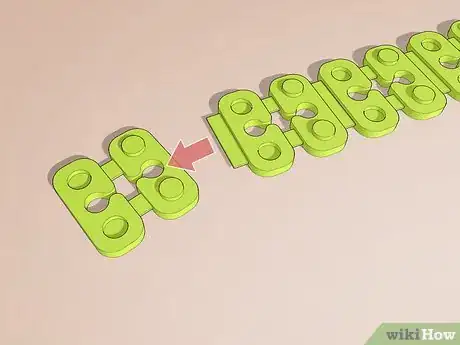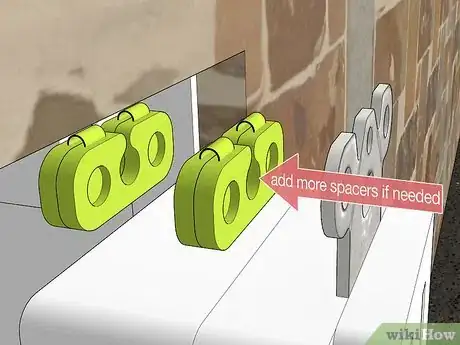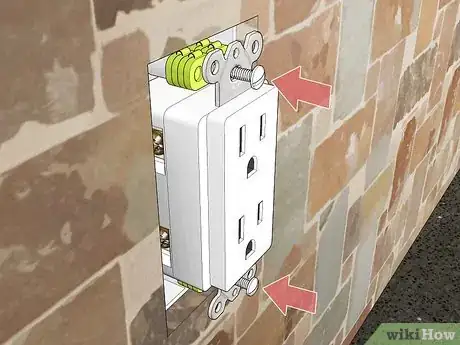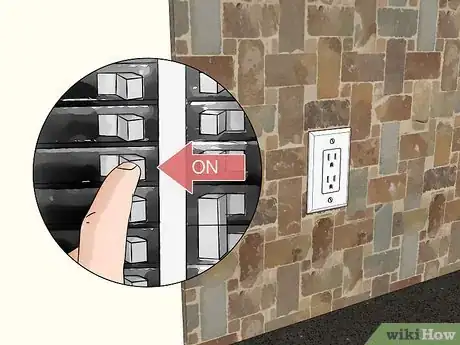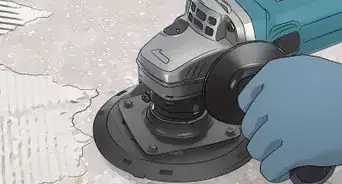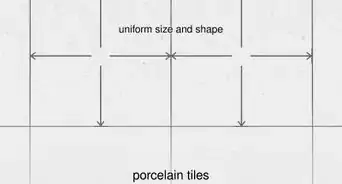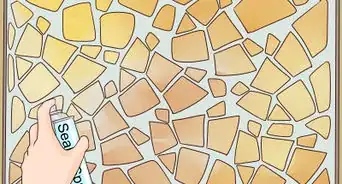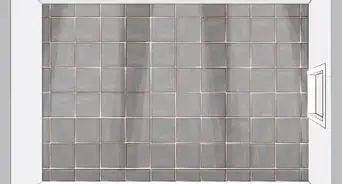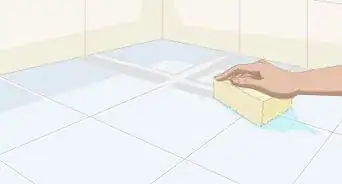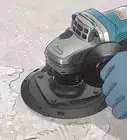This article was co-authored by Josh Goldenberg. Josh Goldenberg is a Residential Remodeling Expert and the Co-Founder of 5blox, based in the Greater Los Angeles area. With more than seven years of experience, Josh and his team specialize in luxurious and sustainable home renovations. 5blox is fully licensed and bonded.
There are 10 references cited in this article, which can be found at the bottom of the page.
This article has been viewed 55,623 times.
A tile backsplash is a classy way to spruce up any kitchen or bathroom wall. If you want to install wall tiles around an electrical outlet, extend the outlet so it sits flush against the face of the new backsplash, rather than sinking into the wall. With some handy plastic spacers made just for this job, this is a project you can easily do yourself in just a few minutes, with no special electrical knowledge required! Soon enough, your electrical outlets will look professionally installed as if the backsplash was always there.
Steps
-
1Remove the faceplate and install the backsplash around the outlet first. Remove the faceplate from the outlet before you install the backsplash so that the plate will sit on top of the tiles and hide the edges after you extend the outlet. Mount the tiles around the outlet as close as you can get them to the edges of the outlet box without covering up either of the mounting straps.[1]
- The outlets mounting straps are the 2 metal brackets at the top and bottom or left and right of the outlet, depending how it is oriented. These are the brackets that screws go through to hold the outlet to the outlet box in the wall.
- Don’t try to extend the outlet before the tiles are on the wall because it will be very difficult to get the spacing just right if you do it that way. It’s much easier to wait until the backsplash is done so you can space the outlet perfectly according to the thickness of the tiling.
- This method can be used to extend any kind of electrical outlet, including those with plugs or light switches.
-
2Turn off the power to the outlet at the breaker box. Locate your breaker box and look at the labels on the different switches to determine which one powers the outlet that you want to extend. Flip the switch to turn it off and test the outlet by plugging something into it to ensure that there is no electricity coming through it.[2]
- Breaker boxes are typically located in your garage, basement, a utility closet, or sometimes a kitchen.
- If you aren’t sure which switch controls power to the outlet, you can try testing different switches until you find the right one or just turn off the master power switch to shut down everything.
Advertisement -
3Unscrew the outlet from the wall using a drill or screwdriver. Insert the tip of a screwdriver or drill bit attached to an electric drill into the screws holding the outlet to the outlet box in the wall. Turn the screws counterclockwise until you can pull them out, then set them aside.[3]
- Depending how far you end up extending the outlet and how long the screws are, you might be able to reuse these screws to reattach the outlet after you space it.
-
4Snap 2 plastic switches and receptacle spacers together. Switch and receptacle spacers are little plastic spacers specifically made for extending outlets. They come in flexible strips that you can bend to snap multiple spacers together and create stacks. Start by snapping the first 2 spacers on a strip of spacers together.[4]
- You can purchase switch and receptacle spacers at a home improvement center, hardware store, or online.
Tip: If you’re trying to find these spacers in a store, you can try asking an employee for electrical spacers or caterpillar spacers, which are other common nicknames for them.
-
5Put the 2 spacers between the outlet and the wall to test the spacing. Place the stack of 2 spacers you just made behind the screw hole on the outlet’s mounting strap and the screw hole in the outlet box in the wall. Hold the stack in place and press the outlet against it to see how far out the stack of 2 extends it.[5]
- If the mounting straps of the outlet rest flush with the backsplash using only 2 spacers, you don’t need to add any more spacers to the stack and can skip the next step.
- If you can't find any spacers, you could wrap a piece of wire up into a coil until it is thick enough to extend the outlet.You could also stack up some small metal washers or nut-type fasteners. The concept is the same as using the plastic spacers.[6]
-
6Snap on additional spacers and test the stack until you find the right depth. Keep snapping on additional spacers, 1 at a time, if a stack of 2 spacers doesn’t extend the outlet far enough forward. Place the stack between the outlet’s mounting straps and the wall after each additional spacer you snap on until you find the right number of spacers.[7]
- A stack of 3-4 spacers is usually sufficient to extend the outlet out far enough for most backsplash tiling, creating the appropriate amount of space between the outlet and wall to be flush with your tile.
- You need 2 stacks of spacers—1 to put underneath each screw that holds the outlet in place.
-
7Cut the excess spacers off of the stacks you made. Use a utility knife or sharp scissors to cut the thin piece of plastic attaching the string of remaining spacers to the stacks of spacers you already snapped together. Store the leftover spacers for future use.[8]
-
1Thread the screws through the outlet and spacers. Put the outlet’s screws back through the holes in the mounting straps. Slide the stacks of spacers onto the screws.[9]
- If the outlet’s screws aren’t long enough to reach the holes in the outlet box with the spacers installed, purchase a longer set of screws to use.
- If you used a coiled piece of wire, washers, or nuts instead of spacers to space the outlet, just slide the improvised spacers over the screws after you put the screws through the holes in the outlet's mounting straps. The process is the same as using the plastic spacers.
-
2Screw the outlet into the outlet box in the wall. Align the tips of the screws with the screw holes in the outlet box in the wall. Use an electric drill or screwdriver to tighten the screws by turning them clockwise until the outlet is snug up against the spacers and flush with the backsplash.[10]
- If the outlet is oriented vertically, starting with the top screw is easiest. If it is oriented horizontally, start at whatever side is more comfortable for you.
Warning: Always use plastic spacers to extend an outlet so it has sufficient support behind it. Don’t ever try to extend an outlet by just using longer screws and not screwing them in all the way or you will end up with a wobbly, unstable outlet.
-
3Mount the faceplate back over the outlet. Snap the faceplate back into place on top of the outlet. Use the provided screws to secure it firmly in place against the backsplash.[11]
- Be careful not to overtighten the faceplate or you could damage it, especially if it is plastic. Just tighten the screws enough to hold it flat against the backsplash.
-
4Turn the power to the outlet back on at the breaker. Go back to your electrical breaker when you finish extending the outlet. Flip the switch that supplies power to the outlet back on so your outlet is ready to use.[12]
Things You’ll Need
- Electric drill or screwdriver
- Plastic switch and receptacle spacers
- Utility knife or scissors
References
- ↑ https://www.uglyducklinghouse.com/dueling-diy-extend-fix-wobbly-outlet/
- ↑ https://www.youtube.com/watch?v=KXiS4yl3bYY&feature=youtu.be&t=51
- ↑ https://www.uglyducklinghouse.com/dueling-diy-extend-fix-wobbly-outlet/
- ↑ https://www.youtube.com/watch?v=RYGkKRKUcws&feature=youtu.be&t=25
- ↑ https://www.youtube.com/watch?v=RYGkKRKUcws&feature=youtu.be&t=40
- ↑ https://www.youtube.com/watch?v=RYGkKRKUcws&feature=youtu.be&t=75
- ↑ https://www.youtube.com/watch?v=RYGkKRKUcws&feature=youtu.be&t=45
- ↑ https://www.youtube.com/watch?v=KXiS4yl3bYY&feature=youtu.be&t=84
- ↑ https://www.youtube.com/watch?v=KXiS4yl3bYY&feature=youtu.be&t=90
- ↑ https://www.uglyducklinghouse.com/dueling-diy-extend-fix-wobbly-outlet/
- ↑ https://www.uglyducklinghouse.com/dueling-diy-extend-fix-wobbly-outlet/
- ↑ https://www.youtube.com/watch?v=KXiS4yl3bYY&feature=youtu.be&t=138
- ↑ https://www.domesticimperfection.com/how-to-extend-an-outlet-to-be-flush-with-a-new-wall/
- ↑ https://www.uglyducklinghouse.com/dueling-diy-extend-fix-wobbly-outlet/



